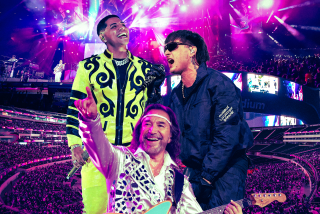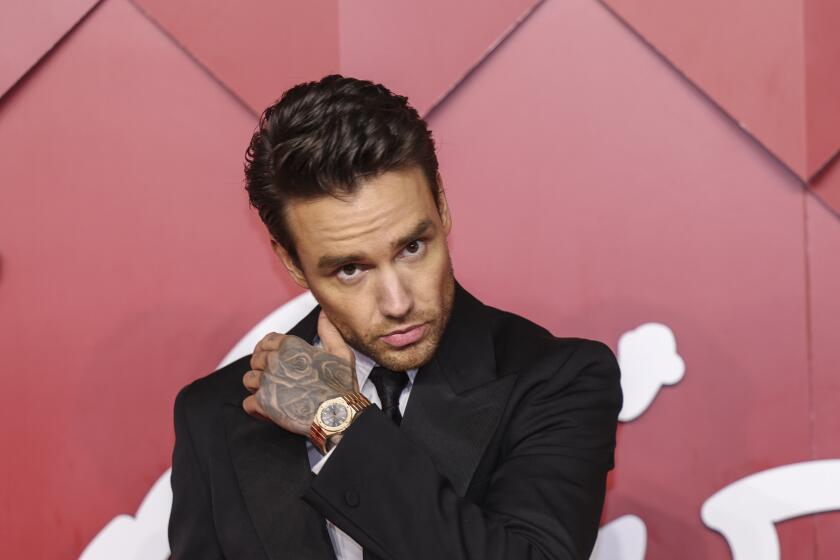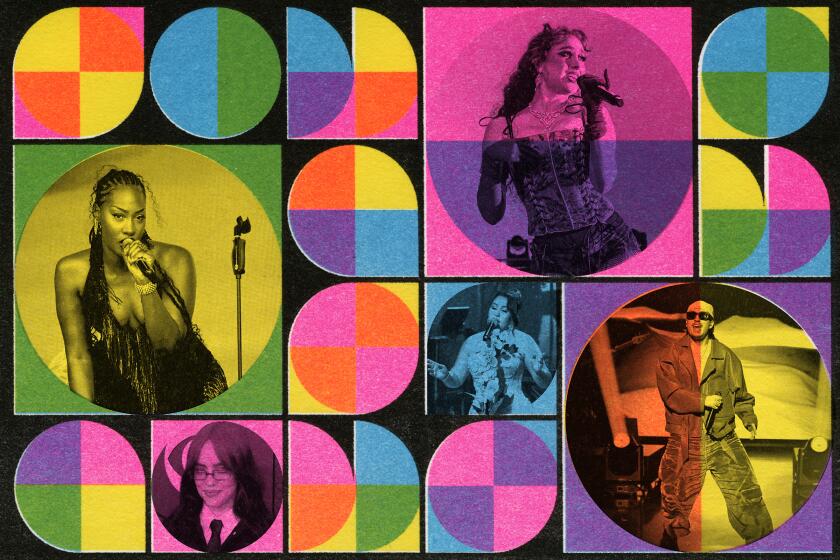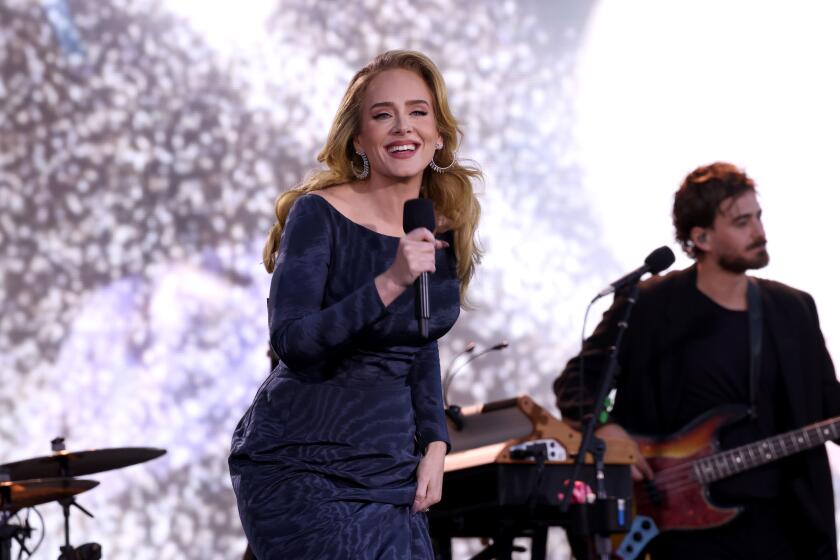‘Smokin’ Grooves’ Tour Lives Up to Expectations
“Smokin’ Grooves,” the ambitious hip-hop tour that ends its six-week run Monday night at the Irvine Meadows Amphitheatre, appears to have lived up to all industry expectations.
Sponsored by the House of Blues, the tour--which featured such acts as the Fugees, Ziggy Marley, Cypress Hill and A Tribe Called Quest--drew an average of about 9,000 fans and grossed nearly $200,000 per show, according to Pollstar, a concert industry publication.
“Those kinds of numbers--for any type of tour--are respectable,” says Gary Bongiovanni, editor in chief of Pollstar.
That’s good news for both the rap community and the team that helped put together the tour: House of Blues co-founder Isaac Tigrett and William Morris agent Cara Lewis.
They went against what the concert industry had considered long odds in even trying to mount a large-scale national rap tour. Though rap music generated more than $800 million in record sales last year, many of the most successful hard-core rap acts have been limited to live appearances at radio-sponsored one-day festivals and isolated club dates.
That’s because live rap shows have always dealt with the perception, caused by a handful of highly publicized incidents at shows over the last decade, that they are targets for violence.
“For [House of Blues] to be able to mount this type of tour without any problems is a step in the right direction,” Bongiovanni said.
Violence, however, wasn’t the only problem facing rap tours. Because major pop and rock promoters and venues have shied away from rap shows, acts have turned at times to inexperienced promoters. This led on occasion to poor organization, lax security and weak sound equipment.
For the tour, the House of Blues spent an estimated $4 million on production, including lighting, sets and sound.
The success of the trouble-free tour means other promoters around the country may now feel more comfortable putting on rap events.
“Kids were able to go to a safe, fun environment to see a show, get five hours worth of music, and we were able to give hip-hop a new life, just as we set out to do,” Lewis says. “It was a chance for artists to go out with a quality show and survive.”
Adds Tigrett: “Some rap shows had been frightening to people in the past, but our shows were like a 180-degree turn. An interracial gathering that worked because people loved the music. I hope that this tour will help others realize that this music can be mass-marketed in a touring situation, and that it can be a very successful thing.”
The “Smokin’ Grooves” grosses didn’t match the figures generated by rival, festival-style tours such as Lollapalooza (an average gross of nearly $800,000), the H.O.R.D.E Festival (almost $500,000) or the Further Festival (nearly $300,000), but those had strong track records. “The Further Festival” may be new this year, but it was tied heavily to the Grateful Dead tradition.
Representatives of facilities in Detroit, Atlanta and Chicago all say they were happy with the reaction to the tour.
“The crowd was great,” says Kathryn O’Rourke, director of marketing for Atlanta’s Lakewood Amphitheatre, which played host to the tour during the Olympics. “There was a really positive buzz going, and the performances were great.”
More to Read
The biggest entertainment stories
Get our big stories about Hollywood, film, television, music, arts, culture and more right in your inbox as soon as they publish.
You may occasionally receive promotional content from the Los Angeles Times.










